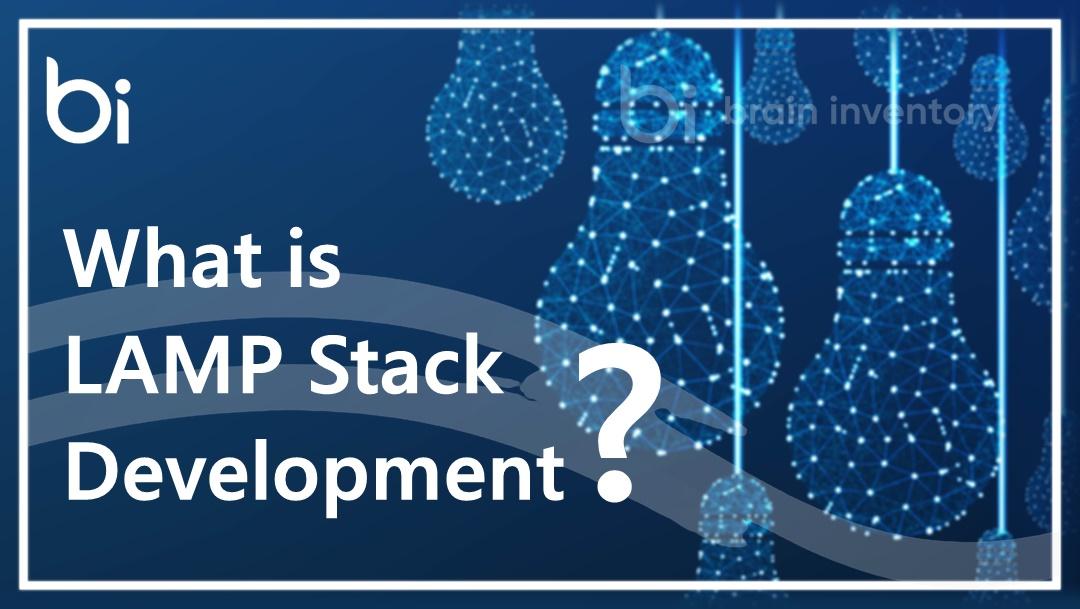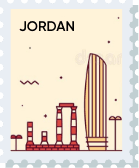What is LAMP Stack Development?

A LAMP Stack is a predefined combination of four different software technologies that enable developers to build websites and web applications. It consists of: Linux, acting as the web server; Apache, as the database server; MySQL, as the programming language; and PHP. All four of these technologies are free to use and supported by an active community. So developers can stay assured of not getting stuck anywhere during the development process and use the LAMP stack to create and maintain web products effortlessly. Also, lamp stack development is a popular framework that powers many of the renowned websites and software development services we commonly use today.
Key Benefits of LAMP Stack Development

- Cost: All the technologies involved in a LAMP stack are open source, which means anyone can start using them without having to bear licensing fees and other costs. Instead of spending money on purchasing proprietary stack components, you can just download the web server, database, programming language, and operating system for free. This, in turn, saves a lot of cost that may otherwise go into purchasing each of these technologies.
- Efficiency: Getting started with a new technological stack requires rigorous testing of different modules, tools, and frameworks. However, the LAMP stack is a tried-and-tested solution for developers, which they can trust blindly and start focusing on what they are building instead of how they should build it.
- Support: LAMP stack is a very popular open-source technology, backed by the support from a large, global IT community. Hence, developers (experts and beginners) can find information on public forums, community groups, open discussions, etc. Developers can always refer to example codes or tested projects created by professionals on an open-source platform.
- Maintenance: Software engineers from across the world take feedback from the open communities and contribute to the development of LAMP stack technologies. They regularly maintain and bring updates to the LAMP stack so as to keep it relevant and secure in today’s competitive IT landscape.
Applications of LAMP Stack
A LAMP stack is generally preferred for backend or server-side development. A backend application runs in an environment that is mostly hidden from users. It consists of:
- Database elements to store data
- Data processing software
- Business logic in code
- API for communicating with other apps
The webpage that shows up on the user side is called the frontend application. Whenever you interact with the page, like clicking a button, your browser makes a connection with the backend to retrieve the required details.
LAMP stack can be leveraged to create both static and dynamic web content.
- Static web pages– Static information is the same for every user. For example, the contact detail on a company’s website is mostly static content. These static pages are created using HTML and CSS.
- Dynamic web pages– Dynamic web pages show information that changes depending on the user. For example, a website notification may change based on your location and is generally dynamic. The web server handles dynamic websites by retrieving data from a database.
Our company delivers the best in custom app development services. Call now.
The LAMP Architecture
A software stack is basically a structured set of layered tools, programming languages, libraries, and technologies that are thoughtfully picked for building and running an application. The stack also consists of components to support the application in many ways, like networking, database, and security.
Similarly, the LAMP architecture consists of four different technologies that eventually work hand-in-hand to create an application. The layers in a LAMP architecture are:
1) Linux
Linux is the operating system in the LAMP stack that you can install and configure for free of cost. It comes at the first level of the LAMP stack and gives the necessary support to all other components in the next layers.
2) Apache
Apache forms the second layer of the LAMP stack architecture and is an open-source web server that stores website files and exchanges information with a browser using HTTP. It works using a three-step process, like whenever a browser requests a web page, the Apache server:
- Receives the request
- Process the request and find the requested file
- Sends the file back to the browser
3) MySQL
MySQL forms the third layer in a LAMP stack architecture, which acts as an open-source database management system. It can store, manage, and handle information in relational databases. For example, developers have to store application data such as sales records, customer records, or inventory records. So whenever a user searches for information, the MySQL web server queries the stored data.
4) PHP
PHP, being the final and fourth layer of the LAMP stack, is a programming language that allows websites to run dynamic processes. A dynamic process has to handle information that is bound to constantly change. Developers embed PHP in HTML to show real-time data on websites.
Alternative programming languages:
While PHP is the standard scripting language of the LAMP stack, you can still replace it with Perl or Python according to your project’s requirements.
- Perl- Perl is an age-old programming language that has been winning hearts since its introduction to the tech world. Developers prefer Perl for web development as it works seamlessly with database integration and has frameworks to support the development process throughout.
- Python– Python is a very popular programming language that developers use for building different types of software. It’s also been around for a long time, so most of the programming experts are well-equipped with its syntax and structures.
How Does a LAMP Stack Work?
When you open a webpage in a particular browser, the LAMP stack carries out the following process.
- Receives requests: The Apache web server receives the user request from the browser. If the request is for a static file, the Apache server sends it directly. However, if the request is for a dynamic file, the Apache server passes this request to the PHP component. The PHP then loads the appropriate file (in HTTP) for the user.
- Processes requests: The PHP file contains PHP functions that help in generating dynamic content. The components in PHP process functions like creating a sales chart or creating a list of inventory. Some PHP functions might also require details from the database.
- Returns responses: The PHP converts the results in HTML format and passes them on to the web server. At the same time, it also stores the updated data in the MySQL database. Finally, the Apache HTTP server sends the dynamic content in HTML to the user’s browser.
Contact us for LAMP Application Development Services.
The Future of LAMP Application Development
The LAMP stack isn’t going anywhere anytime soon. It has been around for years, and it is still the foundation framework for many of the web applications. So, if you want to build your digital website or an application, the LAMP stack is a great technology to start your project with. LAMP stack may seem difficult at first, but as soon as you understand it, you will be amazed at the benefits it offers. So the next time you visit a webpage, take a moment to understand what’s happening at the backend. The LAMP stack is there, quietly working and passing the files back to you!
At Brain Inventory, we specialize in building robust websites powered by the LAMP stack. With our team of developers and years of experience in delivering excellent custom web development projects, we ensure your dream is turned into a reality accurately. Let’s work together. Contact us now!

Have an idea?
Get in touch, we’d be
happy to hear from you
We are always looking out for new collaborations, whether you are a client who is passionate about a project or a talent who is interested in joining our team, our doors are always open.
locate us

India (HQ)
618, Shekhar Central, Palasia Square, A.B Road, Indore, Madhya Pradesh, 452001
+918109561401

United Kingdom
Brain Inventory, SBVS, 8 Roundhay Road, Leeds, UK, LS7 1AB
+18008209286

Canada
44 Main Street East Milton, ONCanada L9T 1N3
+4166696505

Jordan
185 Wasfi Al-Tal Street, Ammon Oasis Complex P.O Box 4724 Amman 11953 Jordan
+960770781000

USA
720 Seneca St Ste 107 Seattle, USA 98101
+1(206)6533419
if it's digital,we'll make it.
- Numetric - Online Accounting Software similar to QuickBooks
- Bloomia - Kegel exercise
- Virifi - Blockchain Powered Document Certification & Signing Platform
- Revolution Travel CRM - Custom CRM Built for Travel Agents
- Fatoura - Online Invoicing Platform
- My Fit Mantra - Your health partner
- Ocureel - Relation Building and video sharing Application